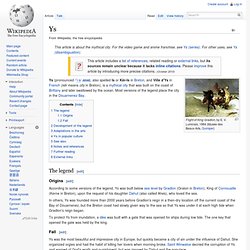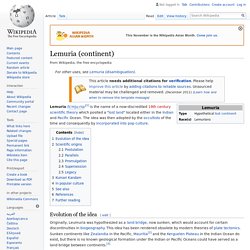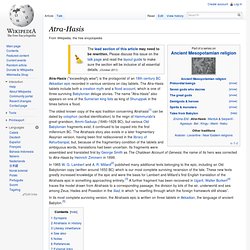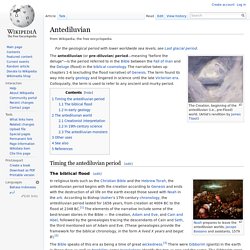

Immanuel Velikovsky. Ziusudra. Ziusudra (also Zi-ud-sura and Zin-Suddu; Hellenized Xisuthros: "found long life" or "life of long days") of Shuruppak is listed in the WB-62 Sumerian king list recension as the last king of Sumer prior to the deluge.

He is subsequently recorded as the hero of the Sumerian flood epic. He is also mentioned in other ancient literature, including The Death of Gilgamesh[1] and The Poem of Early Rulers,[2] and a late version of The Instructions of Shuruppak[3] refers to Ziusudra.[4] Akkadian Atrahasis ("extremely wise") and Utnapishtim ("he found life"), as well as biblical Noah ("rest") are similar heroes of flood legends of the ancient Near East. Although each version of the flood myth has distinctive story elements, there are numerous story elements that are common to two, three, or four versions.
Ziusudra[edit] Sumerian king list[edit] Sumerian flood myth[edit] A Sumerian document known as The Instructions of Shuruppak dated by Kramer to about 2500 BC, refers in a later version to Ziusudra. Ys. Flight of King Gradlon, by E.

V. Luminais, 1884 (Musée des Beaux-Arts, Quimper) Ys (pronounced /ˈiːs/ EESS), also spelled Is or Kêr-Is in Breton, and Ville d'Ys in French (kêr means city in Breton), is a mythical city that was built on the coast of Brittany and later swallowed by the ocean. Lemuria (continent) The idea of Lemuria was subsequently incorporated into the proto-New Age philosophy of Theosophy and subsequently into general fringe belief.

Accounts of Lemuria here differ. All share a common belief that a continent existed in ancient times and sank beneath the ocean as a result of a geological, often cataclysmic, change, such as pole shift, which such theorists anticipate will destroy and transform the modern world. Other scientists hypothesized that Lemuria had extended across parts of the Pacific oceans, seeking to explain the distribution of various species across Asia and the Americas. The Lemuria theory disappeared completely from conventional scientific consideration after the theories of plate tectonics and continental drift were accepted by the larger scientific community.
Some Tamil writers such as Devaneya Pavanar have associated Lemuria with Kumari Kandam, a legendary sunken landmass mentioned in the Tamil literature, claiming that it was the cradle of civilization. Atra-Hasis. In 1965 W.

G. Lambert and A. R. Millard[2] published many additional texts belonging to the epic, including an Old Babylonian copy (written around 1650 BC) which is our most complete surviving recension of the tale. These new texts greatly increased knowledge of the epic and were the basis for Lambert and Millard’s first English translation of the Atrahasis epic in something approaching entirety.[3] A further fragment has been recovered in Ugarit. In its most complete surviving version, the Atrahasis epic is written on three tablets in Akkadian, the language of ancient Babylon.[5] Synopsis[edit] Tablet II begins with more overpopulation of humans and the god Enlil sending first famine and drought at formulaic intervals of 1200 years to reduce the population.
Atlantis. Fictional island in Plato's works, now a synonym for supposed prehistoric lost civilizations Athanasius Kircher's map of Atlantis, placing it in the middle of the Atlantic Ocean, from Mundus Subterraneus 1669, published in Amsterdam.

The map is oriented with south at the top. While present-day philologists and classicists agree on the story's fictional character,[9][10] there is still debate on what served as its inspiration. As for instance with the story of Gyges,[11] Plato is known to have freely borrowed some of his allegories and metaphors from older traditions. Plato's dialogues Timaeus A fifteenth-century Latin translation of Plato's Timaeus The only primary sources for Atlantis are Plato's dialogues Timaeus and Critias; all other mentions of the island are based on them.
Antediluvian. The Creation, beginning of the antediluvian (i.e., pre-Flood) world.

(Artist's rendition by James Tissot) The antediluvian (or pre-diluvian) period—meaning "before the deluge"—is the period referred to in the Bible between the Fall of man and the Deluge (flood) in the biblical cosmology. The narrative takes up chapters 1-6 (excluding the flood narrative) of Genesis. The term found its way into early geology and lingered in science until the late Victorian era.
Colloquially, the term is used to refer to any ancient and murky period.